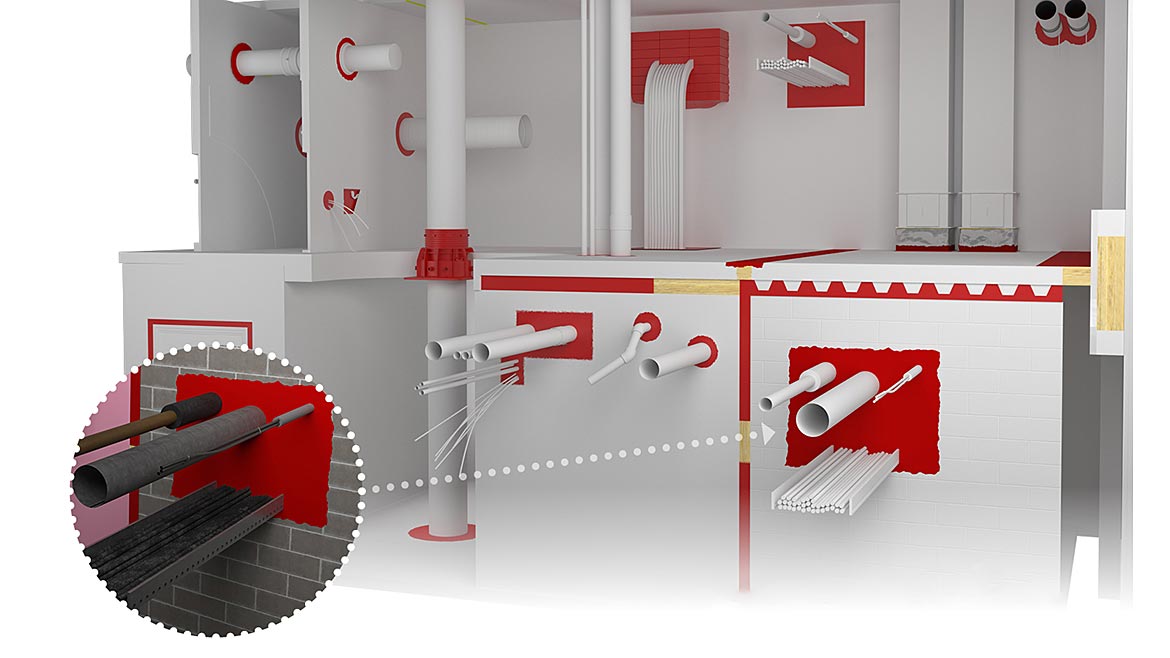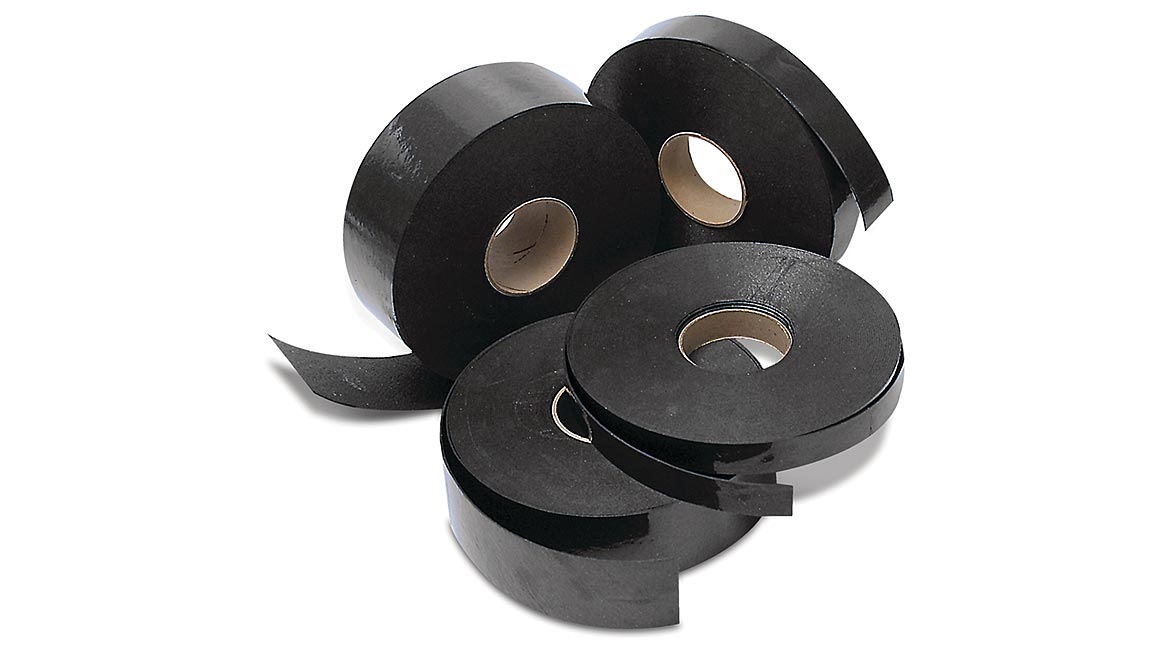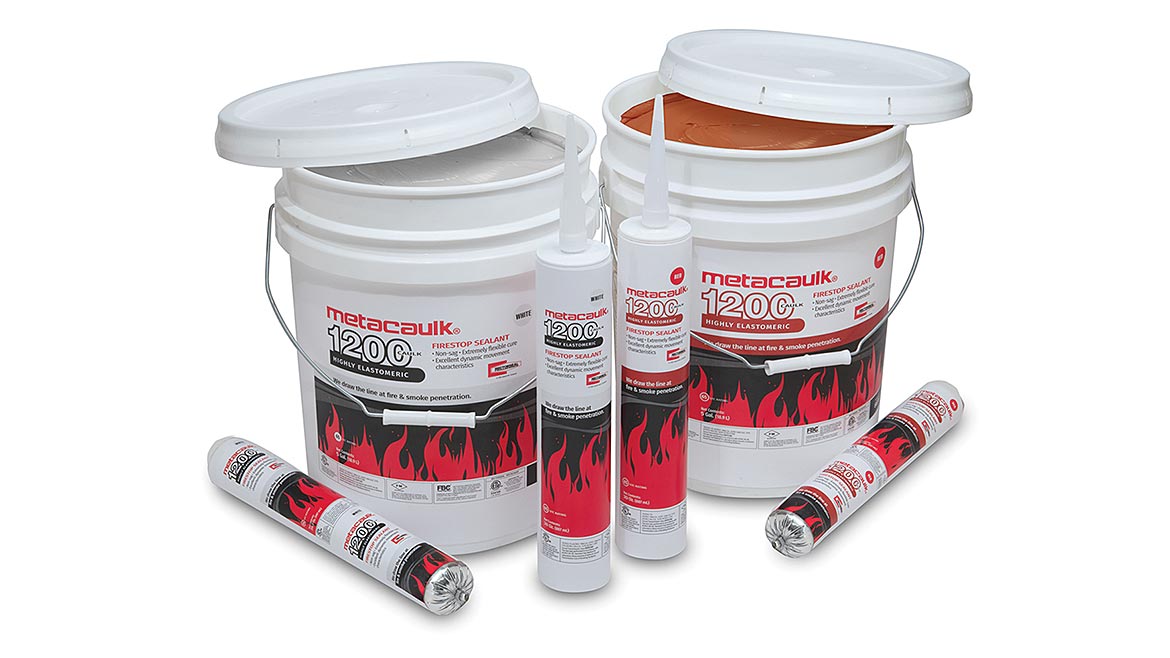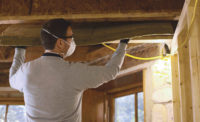Fire prevention in building construction is a critical consideration for those having responsibility for design, construction or refurbishment of new and existing buildings. This is specifically relevant, when considering the diversity of building types, as this is generally described as the “built environment.” Too often, the difference between a safe environment and a deadly one is only a few minutes, if adequate fire protection measures have not been considered.
How a fire develops is totally dependent on how it is controlled. Design measures are taken to influence the formation and spread of fire, smoke and toxic gasses throughout the built environment, typically adopting a balanced approach.
Detection, suppression and containment are fundamental principles utilized to make built environments fire safe, thus covering the safety of the occupants, firefighters, contents and buildings in the surrounding vicinity. Essentially, the objective is to gain time.
Compartmentation, is a globally applied practice for fire safety and forms the fundamental principle of containment. The purpose is to contain the fire in its area of origin for as long as possible by dividing the structure into ‘manageable’ fire cells/zones or compartments. These fire cells are divided by means of fire-resistant wall or floor/ceiling assemblies and must be rated against the location and criteria. There are five areas of application that need to be considered.

What a Service
Service penetrations (also known as a through penetration) is a void or opening created in a fire rated assembly, which allows for a service to pass through. By necessity, a building needs services to function—electricity, water, heating and ventilation are common utilities that can be found in any structure. When these services pass through a fire rated assembly, it can compromise the original integrity, and therefore require sealing, or firestopping.
Membrane or partial penetration is an opening made in one side of the fire rated assembly.
A construction joint is an assembly designed to safely absorb the heat-induced expansion and contraction of construction materials; it also absorbs vibration and allows movement due to ground settlement, thermal expansion or earthquakes.
Linear gap seals or perimeter fire barriers are voids created at the intersection of exterior curtain wall assemblies and fire rated floor or floor/ceiling assemblies.
Cavity barriers are usually considered as the space between two fire rated assemblies. This is often between two “skins” separated by a hollow space (cavity). The skins can be either masonry brick/concrete block or drywall systems. These are designed to divide large spaces into manageable areas of risk, typically to continue a compartment wall up to the roof or to the underside of the floor.
Some companies have developed a fully tested and compliant range of firestopping products that cover the vast majority of applications and design criteria for even the most complex of structures.


In Conclusion
In summary, we could generalize that there are two distinct groups of products which are used; those that are suitable for non-combustible penetrants, such as metallic pipes, air ducts, conduits, trunking, bus-bars or construction/ linear joints, and those products which are suitable for combustible penetrants, such as ‘plastic’ pipes, insulated pipes/ducts and single or bunched cables.
With noncombustible application, the main issue is movement during service life or in a fire, which could disrupt the fire system allowing a passage to form for fire, smoke and toxic gasses to pass through. A typical solution for this type of application is an elastomeric type of seal. These seals are a “one” component, water based, highly elastomeric firestop sealant that have been designed to maintain the integrity of the system and allow for the expected movement. They are formulated for both caulk and spray grade applications, exhibit excellent non-sag characteristics, and will help to maintain the sound reduction index of a structure. They are easy to apply and are protected in a wet and dry stage against mold growth.
For those applications that are combustible, whether it be a plastic pipe, combustible insulation or cable assignment, the issue is that the penetrant will burn/melt leaving a void for fire, smoke, and toxic gasses to pass through. The solution for this type of application would be a pressure based intumescent product that will expand at the same rate as the melting penetrant to form a foam char, thus preventing the passage of fire, smoke and toxic gasses.
Alternatively, the Joint Strip is a highly intumescent, graphite-based composition on an elastomeric synthetic compound. Similarly designed for both combustible service penetrations and construction joints in a wide range of building materials.
There are many variants to consider when selecting the correct firestop solution. Some manufacturers have developed fully interactive web-based platforms, complete with a system selector that allows designers to easily determine the most suitable and appropriate system for the application.







